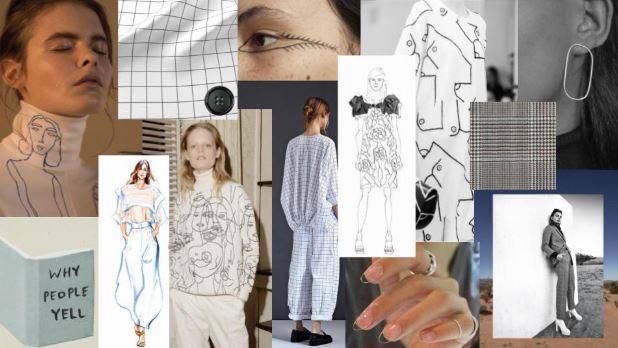
If you are reading the INSIDE THE FASHION INDUSTRY blog series and actually getting work done, tell me how is that going? I hope you are finding it productive. To continue our blog series, and to help you keep up the good work, let’s move forward into material sourcing.
Now, I know that fabric sourcing is not any news around here. If you have read both blogs INSIDE THE FASHION INDUSTRY - Choosing Your Fabrics and DEVELOPING YOUR CLOTHING LINE - Material Sourcing you would know the differences between custom and in-stock fabrics, minimums required by vendors, and different types of fabrics. But if you have not read those posts yet, I do recommend taking a step back, reading both of them, and coming back to this step of the process. Believe me, it will open your mind to a lot of details you probably did not think through - especially if you are new to the fashion industry.
Ok, in this post I want to focus on helping you choose your materials (DUH). Let’s not talk about how you find vendors, how you order your goods, vendor minimums, custom materials, bla bla bla. Let’s focus on choosing your materials.
Here are a couple of tips that will help you select your materials.
1. Look to your mood board
Your mood board will be your inspiration for more than styles and shapes, but also to select your fabrics, colors, and prints.
It is always a great idea to start adding pictures of fabrics/colors/prints next to each one of your sketches. My personal tip here is, when working on your first draft of sketches, draw the sketch right next to the picture which inspired you for that design. The colors and shapes on the picture will help you to choose fabrics and colorways - especially if the inspiration picture is related to nature and natural colors. It will give you a direction for materials.
Here are two examples.
2. Know your garments and the style you are going for
If you want to produce ski jackets, you need to go for a waterproof, breathable, and resistant type of material. That, sometimes, makes it easier because you will not have many options. You know that you will have to go for a certain type of material.
When developing streetwear things can get a bit more complicated since you have all possible options - from linen to silk, denim, polyester… But you need to know the fit you want in your garments.
Going for flowy and not as structured fits, silks are always a good idea. Lightweight cotton and linens as well. If you are going for a structured fit that needs to be comfortable and versatile, stretch fabrics are the ones to go for it (especially if you are going for sportswear kinda gear and fitted flattering dresses).
Regardless of what you want, you need to make sure that your materials are coherent to your garments. Please do not tell me that you want to develop a new line of pajamas and loungewear done in 100% real leather (lol, but for real).
3. Look back to your budget
This might seem impossible, but the truth is: not everything is available in the market. You might see an amazing fabric in a Chanel skirt but you will not find that fabric available to buy. That was probably done custom and, to create custom materials, you have to meet vendor minimums, which tend to be high.
So making a selection of fabric you want, what is available out there, looking back to your overall budget, and checking what is doable within those numbers is the main step to select your final fabrics and trims.
Moving forward with our INSIDE THE FASHION INDUSTRY blog series, the next step is something you all want to know, I keep repeating and going back to it all the time and, in the end, it is the most important step of starting a new fashion line: budgeting.





Comments